When to Lower Your Baby’s Crib: A Mattress Height Guide
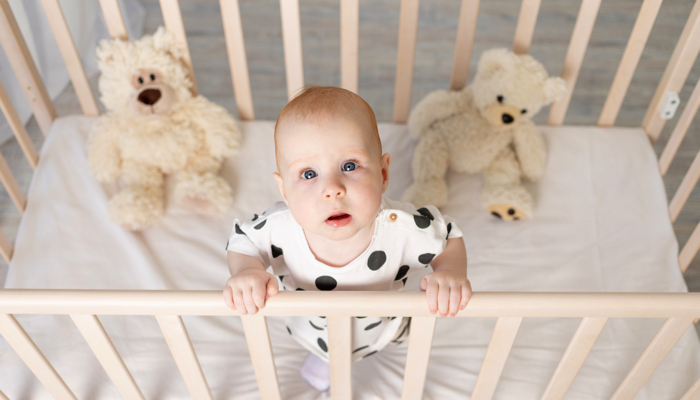
- It’s safe to lower your baby’s crib mattress height, and it keeps your baby safer when their crib mattress is at the right level.
- You’ll know that it’s time to lower your baby’s crib when they show signs of sitting unsupported and they’re ready to stand.
- Many babies will be ready to have their crib mattress lowered between five and eight months old.
- As long as you follow the manufacturer’s instructions and safety guidelines, you can lower the crib mattress easily and keep your baby safe.
As with so many parenting decisions, figuring out when to lower your baby’s crib mattress has to be guided by your child’s readiness, growth, and development. But above all, this decision should be based on your baby’s safety, which will give you peace of mind.
When it comes to crib safety, this is one area where many experts agree. The advice to parents is clear—you should always follow the manufacturer’s assembly instructions. Keep your baby’s crib clear of any loose items, and watch your baby’s growth for signs that it’s time to adjust the crib mattress height.
Most cribs offer at least three settings that will allow you to adjust your baby’s crib mattress height as they reach developmental milestones.
When Should I Lower My Baby’s Crib?
Your baby’s age and developing mobility will signal when it’s time to change the crib mattress setting.
Newborn babies who are not yet mobile can safely sleep in cribs set to the highest position. The highest crib setting allows parents to reach their babies easily and to lay them down safely when they’re still small. When the crib is at its lowest setting it may be difficult for parents to reach their newborn safely.
When your baby shows they can sit unsupported, it’s time to lower your crib mattress. For most babies, this happens between 5 and 8 months. The American Academy of Pediatrics (AAP) suggests lowering your baby’s crib to its lowest setting before they learn to stand.
A baby that can sit today may surprise you by standing up tomorrow. Lower the crib when you see signs that your child can sit unsupported to safeguard against crib-related accidents.
Why Lower the Crib Mattress?
Babies that can sit up will soon be able to pull up by leaning on the sides of the crib. Once they start pulling up and getting into a standing position, babies are in danger of flipping themselves over the crib rail if the mattress level is set too high.
You will need to lower the mattress to its lowest position for older babies and toddlers in case they attempt climbing out. Most falls happen when babies become escape artists and won’t stay in their cribs. For this reason, the AAP also recommends that children over 35 inches tall should move to a toddler bed to reduce the risk of accidents.
Lowering the crib mattress height at the appropriate times as your baby grows will keep your baby safe. Paying attention to mattress height will reduce your chances of heading to the emergency room because of a preventable fall from the crib.
How To Lower a Crib Mattress
To lower a crib mattress, follow these steps:
- Remove all bedding from the crib. This includes the mattress, mattress protector, sleep sack, sheet, and any other bedding.
- Check the manufacturer’s assembly instructions and decide on the height for the crib mattress.
- Remove the screws according to the instructions and adjust to the appropriate setting.
- Replace the screws correctly and check for stability.
- Replace the mattress, mattress protector, and fitted sheet. Ensure that these fit tightly and will not snag or come loose as your baby moves in the crib.
- Check the slats, crib rails, and corners for sharp edges or any damage to the crib.

Why Raise The Crib Mattress?
At the start of your baby’s life as a newborn, you may want to raise the crib mattress to its highest setting. The highest crib setting allows you to lay a new baby down safely. It may also be easier to reach a newborn at the highest crib setting for mothers recovering from childbirth and C-sections.
You might find having the crib on a higher setting easier on your back if you’re sleep training a young baby. If you’re using the Pick Up Put Down method with a young baby who is not yet mobile, you might find this more comfortable.
However, as soon as your baby is sitting unsupported and showing signs of standing, you should lower the mattress. Pay attention to mattress height for your baby’s safety no matter what sleep training method you’re using.
If a baby is suffering from reflux or congestion, you may want to incline their mattress. A slight incline can help ease a baby’s symptoms. However, you must never incline a mattress by putting objects on top of it. Towels, pillows, or sleep positioners in the crib with your baby all create a suffocation risk.
Only incline a crib mattress by following the manufacturer’s instructions or putting an object under the mattress to create a slight incline. Always ensure that there are no gaps between the mattress and the sides of the crib so that your baby cannot get stuck or accidentally injured.
How To Raise a Crib Mattress
To raise a crib mattress to the middle setting or highest setting, follow the same steps as above for lowering the mattress. Make sure you follow the manufacturer’s instructions exactly before attempting any modifications.
First, clear the crib of the mattress and all bedding so you have a clear view of what you’re doing. Make sure that all screws are replaced firmly and tightly. When you put the mattress back in the crib, test it for stability.
Always remember to keep sheets and mattress protectors tight and fitted. Keeping the crib free of loose items is safer for your baby and reduces the risk of suffocation and sudden infant death syndrome (SIDS). It also helps you avoid having an overstimulated baby by minimizing bedtime distractions.
Safety Tips When Adjusting Crib Mattresses
When adjusting your baby’s crib mattress height, it’s important to keep the following safety tips in mind:
- Make sure to follow the manufacturer’s assembly instructions exactly for your specific crib when adjusting mattress height.
- Make sure the crib mattress fits your crib perfectly. There should be no gaps between the crib and the mattress where your baby could get stuck or injured.
- If you’re using an older crib, make sure that no parts have been broken or modified. The Consumer Product Safety Commission suggests that you use a new crib when possible and that you don’t use cribs that are more than ten years old.
- Check the crib rails and slats periodically for any sharp edges or splinters that could hurt your baby when they hold onto the sides.
- Don’t attempt to change a crib mattress setting before removing the mattress, mattress protector, and any other bedding. You need a clear view of the crib’s hardware and structure before you make adjustments.
- Bumper pads, crib bumpers, stuffed animals, pillows, loose blankets, and soft items all create a suffocation risk. For safety reasons, these should not be kept in a crib with a sleeping baby.
- The AAP found that the risk of sudden infant death syndrome (SIDS) is reduced by keeping the crib clear of accessories. Sleep sacks are a safe alternative to loose blankets.
- If your crib needs replacement parts, the AAP recommends that you only purchase these from the manufacturer. Never replace parts with other hardware or crib pieces that are not original to the crib.
- Never position a crib near a window, drapery, window blinds, or dangling cords to prevent the risk of strangulation.
- Check the AAP’s guide to baby bedroom safety for more information about how to create a safe sleeping environment for your baby.
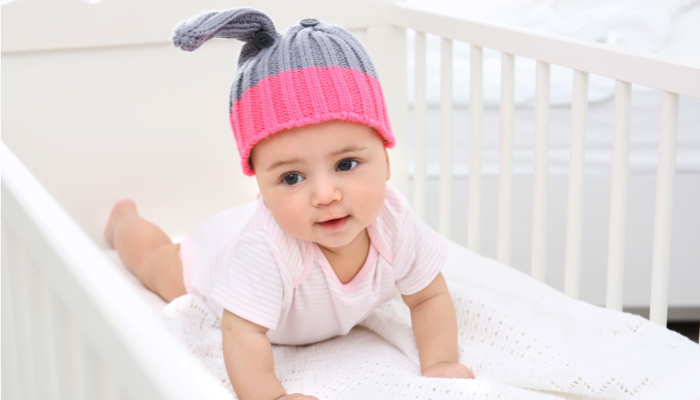
FAQs
At What Age Should I Transition My Baby from a Crib to a Toddler Bed?
Experts recommend moving your baby from a crib to a toddler bed when they’re over 35 inches tall or when the crib rails come to about their chest height. This reduces the risk of accidents from children falling or trying to climb out of the crib.
What Items Can and Should Go Inside the Crib with My Baby?
To keep safe it’s best to keep your baby’s crib clear of any toys, excess bedding, or accessories. Parents are advised not to place crib bumpers, bumper pads, stuffed animals, pillows, sleep positioning devices, loose blankets, or quilts in their baby’s crib.
Sleep sacks are safe alternatives and provide a sleeping baby with enough comfort and warmth. Keeping your baby’s crib clear of any extra items reduces the suffocation risk as well as the risk of SIDS.
Is It Safe to Lower the Crib Mattress to the Floor?
Most cribs don’t offer this mattress setting. Usually, the lowest setting for a crib mattress will still be above the floor. Only lower a crib mattress to the floor if your crib is specifically designed to do this and you’re following the manufacturer’s instructions. If your child needs to have their mattress lowered even further than the lowest crib setting to keep them from climbing out, consider moving them to a toddler bed.
Is It Safe to Keep My Baby’s Crib in Their Nursery or Should it Be in My Bedroom?
In 2016, the AAP revised its guidance on safe sleep. It now advises that parents and babies share their bedroom—but not their bed—for at least the first six months, and ideally, for the first year. Their study showed that room-sharing reduced the risk of SIDS and encouraged breastfeeding.
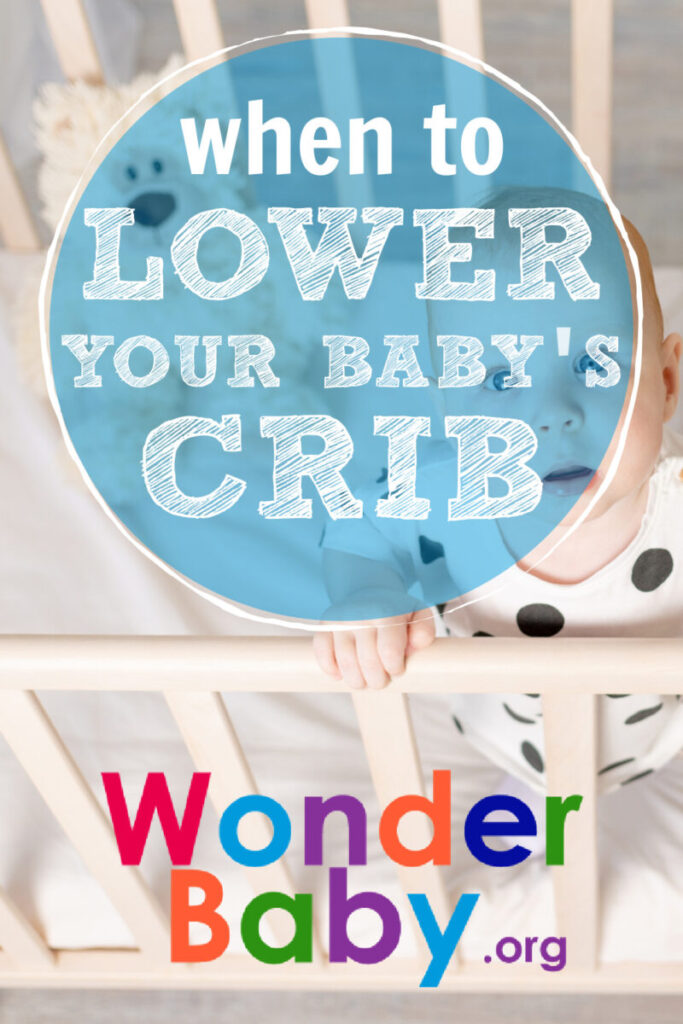
Related Posts
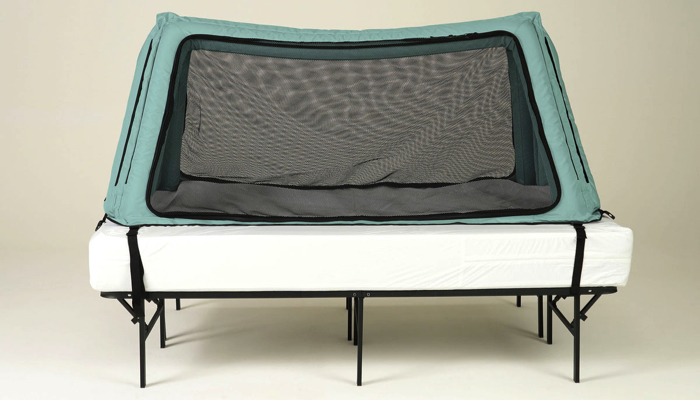
Sleep, Special Needs
Safe Place Bedding Travel Bed Review
Traveling with a special needs child can be stressful! Having a safe, durable, and easy to use travel bed can make traveling so much easier!
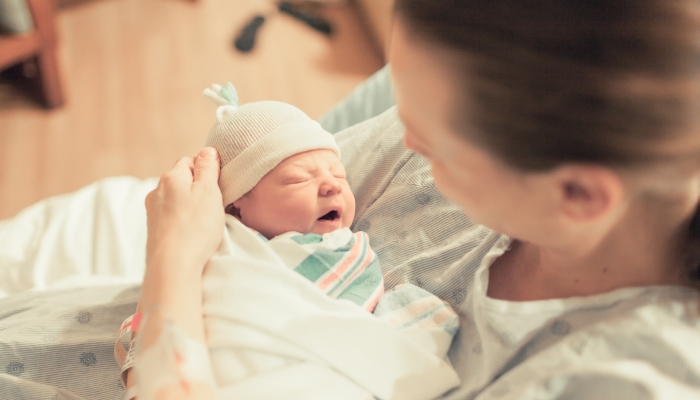
Sleep, Special Needs
Sleep Regimen for Premature Babies: Special Considerations
It can take premature babies much longer than their full-term peers to sleep for long stretches. A preemie sleep schedule may encourage better sleep.
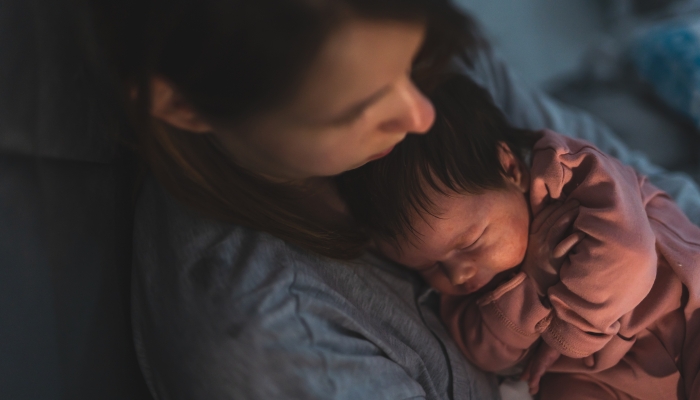
Sleep
Mastering the Bedtime Routine: 3 Tips for a Peaceful Night’s Sleep
From around six weeks, a newborn bedtime routine can help your baby learn the difference between day and night and prepare for a restful night’s sleep.